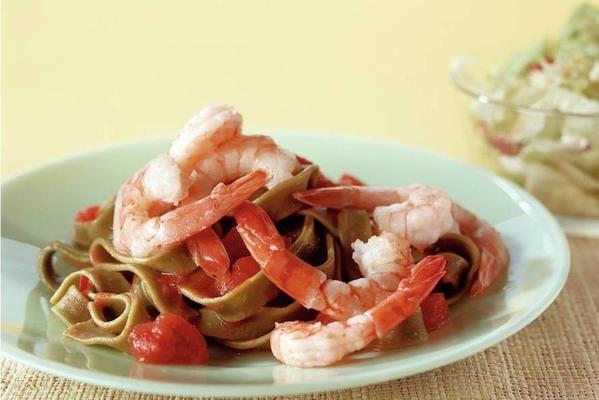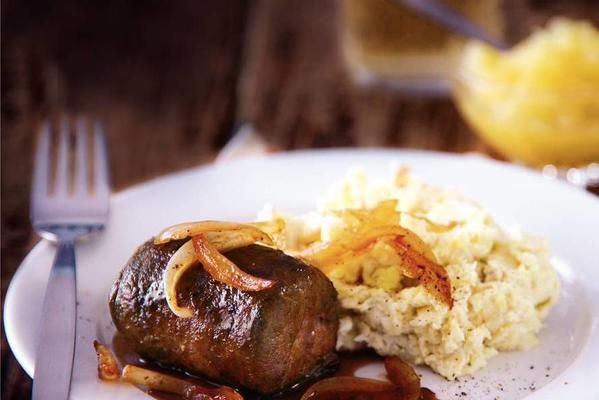Gluten special part 4: 10 benefits of gluten-free food + alternatives
-
Click below to read Part 3: Gluten special part 3: 10 Steps to a gluten-free diet
The top 10 biggest benefits of gluten-free eating
-
Most people think of gluten-free food only as people who cannot tolerate gluten. However, this is not the only benefit people have from eating gluten-free. We run through the top 10 greatest benefits of gluten-free eating, some of which will blow people's minds:
-
Most people think of gluten-free food only as people who cannot tolerate gluten. However, this is not the only benefit people have from eating gluten-free. We run through the top 10 biggest benefits of gluten-free eating, some of which will blow people's minds:
1. It relieves celiac disease symptoms
-
This is the most common reason people will choose a gluten-free diet. Million people suffer from the autoimmune digestive disease called celiac disease. For those who suffer from celiac disease, a gluten-free diet is the only treatment we know works. Celiac disease is an autoimmune disease in which the body's own immune system attacks your gut the moment you eat gluten, the vegetable proteins in wheat and wheat products.
-
 11 minMain dishpeanut oil, tofu stir-fry cubes finely seasoned, stir fry sauce sweet and sour, thick noodles, carrot julienne, beetroot julienne, yellow bell pepper, watercress,rainbow salad with tofu
11 minMain dishpeanut oil, tofu stir-fry cubes finely seasoned, stir fry sauce sweet and sour, thick noodles, carrot julienne, beetroot julienne, yellow bell pepper, watercress,rainbow salad with tofu -
 45 minMain dishRed cabbage, mild olive oil, quinoa plus, forest outing, lemon, sesame oil, soy sauce less salt, Bio Today tahini white in pot, tap water,grilled red cabbage with quinoa salad
45 minMain dishRed cabbage, mild olive oil, quinoa plus, forest outing, lemon, sesame oil, soy sauce less salt, Bio Today tahini white in pot, tap water,grilled red cabbage with quinoa salad -
 30 minDessertBrie, Roquefort, port salut, gruyere, Camembert, walnut, garlic, thyme, honey, grape, baguette, Red onion, red grape, raisins, Red wine, Red wine vinegar, Brown sugar,generous cheese plate with onion marmalade
30 minDessertBrie, Roquefort, port salut, gruyere, Camembert, walnut, garlic, thyme, honey, grape, baguette, Red onion, red grape, raisins, Red wine, Red wine vinegar, Brown sugar,generous cheese plate with onion marmalade -
 30 minDessertFull Milk, whipped cream, macaroon, custard powder, vanilla sugar, sugar, protein, amaretto, almond liqueur, basic recipe cooking pears,macaroon pastry with casserole
30 minDessertFull Milk, whipped cream, macaroon, custard powder, vanilla sugar, sugar, protein, amaretto, almond liqueur, basic recipe cooking pears,macaroon pastry with casserole
2. Lose weight
-
Because gluten is often present in processed, high-calorie foods such as salad dressings, ready meals, and sauces, these foods are not a good idea in a gluten-free diet. This further reduces calorie intake and makes people lose weight.
3. It can lower cholesterol
-
When our blood cholesterol levels are high, saturated fats and cholesterol accumulate on the lining of the arteries, these are the same arteries that supply the heart. becoming flexible, people suffer from cardiovascular disease. Gluten-free options have been shown to lower cholesterol.
-
When our blood cholesterol levels are high, saturated fats and cholesterol accumulate on the lining of the arteries, the same arteries that supply the heart. Because these arteries become narrower and less becoming flexible, people suffer from cardiovascular disease. Gluten-free options have been shown to lower cholesterol.
4. Better digestion
-
These days our digestive system is bombarded with a large number of substances that actually do not belong there. These substances cause many problems for a system originally designed to process natural food. Natural food (without extra gluten) works better for our body.
-
 5 minDrink without alcoholbananas, cool fresh apple-pear raspberry juice, Soy drink vanilla,soy fruit shake
5 minDrink without alcoholbananas, cool fresh apple-pear raspberry juice, Soy drink vanilla,soy fruit shake -
 20 minMain dishsauerkraut, sticking potato, liquid baking product, half-to-half minced, Spice meatballs, pineapple, olive oil, liquid baking product,gratin sauerkraut dish with minced meat
20 minMain dishsauerkraut, sticking potato, liquid baking product, half-to-half minced, Spice meatballs, pineapple, olive oil, liquid baking product,gratin sauerkraut dish with minced meat -
 40 minMain dishlemongrass, fresh ginger, Red peppers, onions, tomato cubes, fresh cod fillet, coriander, oil, ground turmeric (koenjit), coconut milk, salt,fish in creamy coconut sauce
40 minMain dishlemongrass, fresh ginger, Red peppers, onions, tomato cubes, fresh cod fillet, coriander, oil, ground turmeric (koenjit), coconut milk, salt,fish in creamy coconut sauce -
 15 minSide dishsweet potato, soft goat cheese, egg, spring / forest onion,stuffed sweet potato with egg
15 minSide dishsweet potato, soft goat cheese, egg, spring / forest onion,stuffed sweet potato with egg
5. Extra energy
-
By eating without gluten, our body gets much less processed sugars and also no foods with a lot of fructose. Gluten-free eating gives our body the natural nutrition it needs, making it for the body easier to process this food. In turn, the fact that our bodies can process food more easily helps our bodies to perform better naturally.
-
By eating without gluten, our body gets much less processed sugars and no foods with a lot of fructose. Gluten-free eating gives our body the natural nutrition it needs, making it for the body easier to process this food. In turn, the fact that our bodies can process food more easily helps our bodies to perform better naturally.
6. Less joint pain and more
-
For people who suffer from joint pain, problems concentrating, frequent loss of balance, arthritis, and other neuralgic conditions, a gluten-free diet may be the best solution. Most people don't realize that these disorders are sometimes linked to an overconsumption of foods containing gluten.
7. Cleaner skin
-
Gluten can very well be the cause of constant acne problems that seem like they will never go away. This is possible even if you have a mild intolerance to gluten. A gluten-free diet can lead to smoother, smoother skin for some people.
-
Gluten can very well be the cause of constant acne problems that seem like they will never go away. This is possible even if you have a mild intolerance to gluten. A gluten-free diet can ensure that some people have a more beautiful, softer skin.
-
 20 minMain dishTasty vine tomato, (olive oil, fresh basil, onion, garlic, Parmigiano Reggiano, zucchini spaghetti, pumpkin spaghetti, mini buffalo mozzarella,lukewarm pumpkin and zucchini spaghetti
20 minMain dishTasty vine tomato, (olive oil, fresh basil, onion, garlic, Parmigiano Reggiano, zucchini spaghetti, pumpkin spaghetti, mini buffalo mozzarella,lukewarm pumpkin and zucchini spaghetti -
 15 minSide dishtraditional olive oil, curry powder, wheat flour, coconut milk, sambal oelek, chicken broth tablet, water, fresh mango,curry sauce with mango
15 minSide dishtraditional olive oil, curry powder, wheat flour, coconut milk, sambal oelek, chicken broth tablet, water, fresh mango,curry sauce with mango -
 30 minMain dishtraditional olive oil, lean ground beef, frozen Mexican wok vegetables, salsa sauce mild, taco shell, grated young cheese, creme fraiche,Mexican vegetable in tacos
30 minMain dishtraditional olive oil, lean ground beef, frozen Mexican wok vegetables, salsa sauce mild, taco shell, grated young cheese, creme fraiche,Mexican vegetable in tacos -
 95 minMain dishmaize chicken, lemon, coarse sea salt, pepper, extra virgin olive oil, garlic, thyme, zucchini, tomatoes (small to), black olives without pit,provençal chicken with zucchini and tomatoes
95 minMain dishmaize chicken, lemon, coarse sea salt, pepper, extra virgin olive oil, garlic, thyme, zucchini, tomatoes (small to), black olives without pit,provençal chicken with zucchini and tomatoes
8. A better mood
-
A byproduct of gluten intolerance is depression. If a person suffers from depression related to poor nutrient absorption, a gluten-free diet can help. This is because that way the intestines can slowly heal and the absorption of nutrients will improve.
-
A byproduct of gluten intolerance is depression. If a person suffers from depression related to poor nutrient absorption, a gluten-free diet can help. This is because that way the intestines can heal slowly and the absorption of nutrients will improve.
9. Sleep better
-
Some of the side effects of gluten intolerance are sleep apnea or restless leg syndrome. Eating foods that are gluten-free can provide relief from those restless nights and ensure a good night's sleep. Read more: 10 tips to sleep better!
10. Autism Effects Decrease
-
Some researchers, doctors, and parents believe that removing gluten from a child's diet can not only solve gastrointestinal problems but also improve certain symptoms of autism. Studies done with children with autism have shown that certain children saw marked improvement in their symptoms after they stopped eating gluten. However, this is a controversial topic and more research is certainly needed.
Alternative for gluten
-
Wheat flour contains gluten which strengthens the dough during baking. Since people with a gluten intolerance cannot tolerate wheat or gluten, they should look for alternative binders when baking. The flours below are several alternatives to wheat flour. However, it is important to note that there cannot be an exact substitute for wheat flour, and recipes made with alternative flour will always differ slightly from those made with wheat.
-
It is always best to store flour in airtight containers, in a dark, cool place to prevent the flour from going rancid quickly.
Amaranth flower
-
Amaranth flour is made from the seed of the Amaranth plant, a leafy vegetable. Amaranth seeds are very high in protein, making it a nutritious baking flour. Alternative names include African spinach, Chinese spinach, Indian spinach, and elephant ear.
Arrowroot flower
-
Arrowroot (also called Arrowroot) flour is ground from the root of the plant, and is very useful for thickening recipes. It has no flavor and the fine powder turns clear when being cooked. This makes it ideal for thickening clear sauces.
-
 25 minSmall dishflour, frozen puff pastry, egg, milk, walnut, mature cheese, paprika, dried Provençal herbs,puff pastry-sticks
25 minSmall dishflour, frozen puff pastry, egg, milk, walnut, mature cheese, paprika, dried Provençal herbs,puff pastry-sticks -
 20 minSide dishEggs, lettuce, parsley, olive oil (extra virgin), tarragon vinegar, salt and freshly ground pepper,lettuce with egg dressing
20 minSide dishEggs, lettuce, parsley, olive oil (extra virgin), tarragon vinegar, salt and freshly ground pepper,lettuce with egg dressing -
 15 minSmall dishbaking flour, peanut oil, flat leaf parsley,ar'nabit mi'li
15 minSmall dishbaking flour, peanut oil, flat leaf parsley,ar'nabit mi'li -
 15 minAppetizerScottish salmon fillet, butter or margarine, fresh dill, creme fraiche, dry white wine, arugula lettuce melange, pan tostado,baked salmon with white-wine sauce
15 minAppetizerScottish salmon fillet, butter or margarine, fresh dill, creme fraiche, dry white wine, arugula lettuce melange, pan tostado,baked salmon with white-wine sauce
Barley flour
-
Barley contains only a small amount of gluten, and is therefore rarely used to make bread, with the exception of unleavened bread. It has a slightly nutty flavor and can be used to thicken or flavor soups or stews. Mixed with other alternative flours, it is also quite versatile for cakes, biscuits, pastries, etc.
Brown rice flour
-
Brown rice flour is relatively heavier than white rice flour. It is milled from brown rice so it has a higher nutritional value than white rice flour, and since it contains the bran of the brown rice it has a higher fiber content. This also means that it has a distinct, noticeable texture, somewhat grainy. It has a slight nutty flavor, which is sometimes evident in some recipes, depending on the other ingredients. The texture will also contribute to a heavier product than recipes made with white rice flour. It is not often used completely on its own due to its heavier nature.
Buckwheat flour
-
Buckwheat flour is not a form of wheat. Buckwheat is actually related to rhubarb. The small seeds of the plant are ground to make flour. It has a strong nutty flavor and so is generally not used on its own in a recipe as the taste of the final product can be very overpowering and slightly bitter. Alternate names include: beech wheat, kasha, Saracen corn.
Chickpea flour (also known as garbanzo flour)
-
These are ground chickpeas and have a strong, slightly nutty flavor. It is generally not used on its own.
Cornstarch
-
Cornstarch is milled from corn into a fine, white powder, and is used in thickening various recipes and sauces. It has a neutral taste and is therefore used in combination with other ingredients that add flavor to the recipe. It also works well when mixed with other flours, such as fine batters for tempura. Alternative name: corn starch.
Millet flour
-
This comes from the grass family and is used as a cereal in many African and Asian countries. It can be used to thicken soups and make flat breads and baking tray pastries. Because it does not contain any gluten, it is not suitable for many types of baking.
Potato flour
-
This flour should not be confused with potato starch flour. Potato flour has a strong potato-like flavor and is a heavy flour, so you don't need much. It is not advisable to buy this in large quantities unless you are using it on a very regular basis for a variety of recipes. It does not have a very long shelf life.
Potato starch flour
-
This is a fine white flour made from potatoes, and has a light potato-like flavor that cannot be found in many recipes. It is one of the few alternative flours that can be stored properly in an airtight container and stored somewhere cool and dark.
Quinoa flour
-
Quinoa is related to the spinach and beet family of plants. It has been used as a cereal for over 5000 years, and the Incas called it the mother seed. Quinoa is a good source of vegetable protein. The seeds of the quinoa plant are ground to make flour.
Rye flour
-
Rye flour has a distinct flavor and is dark in color. Bread made with rye flour is often heavier than those made with wheat, for example pumpernickel which is nearly black. Rye flour has a low gluten content, but can also be used for recipes such as pancakes and muffins.
-
 25 minMain dishbalsamic vinegar, garlic, steak, Spaghetti, traditional olive oil, fresh green olive tapenade, arugula, Parmigiano Reggiano,spaghetti with steak and arugula
25 minMain dishbalsamic vinegar, garlic, steak, Spaghetti, traditional olive oil, fresh green olive tapenade, arugula, Parmigiano Reggiano,spaghetti with steak and arugula -
 15 minAppetizerfennel bulb, arugula, red pointed pepper, black agnus carpaccio (a 100 grams), capers,black angus carpaccio with fennel
15 minAppetizerfennel bulb, arugula, red pointed pepper, black agnus carpaccio (a 100 grams), capers,black angus carpaccio with fennel -
 35 minMain dishsweet potatoes, salad onion, garlic, cooking dairy, grated cheese for vegetable gratin, almond shavings, peanut oil, breaded schnitzels, Broccoli,crispy schnitzel with sweet potato gratin and broccoli
35 minMain dishsweet potatoes, salad onion, garlic, cooking dairy, grated cheese for vegetable gratin, almond shavings, peanut oil, breaded schnitzels, Broccoli,crispy schnitzel with sweet potato gratin and broccoli -
 30 minMain disholive oil, onion, tomato, risotto rice, laurel leaf, thyme, saffron, turmeric, fish stock of 1 tablet, mixed seafood, mixed whitefish fillet, mussel, lemon,fish paella from the oven
30 minMain disholive oil, onion, tomato, risotto rice, laurel leaf, thyme, saffron, turmeric, fish stock of 1 tablet, mixed seafood, mixed whitefish fillet, mussel, lemon,fish paella from the oven
Soy flour
-
Soy flour is a protein-rich flour with a nutty flavor. It is generally not used on its own in recipes, but in combination with other flours it is a very good alternative flour. It can be used to thicken recipes or added as a flavor enhancer.
-
It should be stored carefully as it is a high fat flour and can turn rancid quickly if not stored properly. A cool, dark environment is recommended and it can even be stored in the refrigerator.
Tapioca flour
-
Tapioca flour is made from the root of the cassava plant. Once ground, it takes the form of a light, soft, fine white flour. Tapioca flour makes baking slightly tougher and is a good thickener.
-
 15 minMain dishgreen tagliatelle, garlic, Red pepper, olive oil, tomato cubes, cocktail shrimp, mixed salad, vinaigrette,spicy tagliatelle with shrimps
15 minMain dishgreen tagliatelle, garlic, Red pepper, olive oil, tomato cubes, cocktail shrimp, mixed salad, vinaigrette,spicy tagliatelle with shrimps -
 50 minMain dishsomething crumbly potatoes, sauerkraut natural, tomato paste, sambal oelek, bacon, semi-skimmed milk, unsalted butter, Gelderse smoked sausage,Sauerkraut with smoked sausage
50 minMain dishsomething crumbly potatoes, sauerkraut natural, tomato paste, sambal oelek, bacon, semi-skimmed milk, unsalted butter, Gelderse smoked sausage,Sauerkraut with smoked sausage -
 20 minBreakfastrucola lettuce, bunch onion, roasted red peppers in pot, traditional olive oil, medium sized egg, fresh cream, grated mature cheese, butter,creamy cheese omelet with arugula
20 minBreakfastrucola lettuce, bunch onion, roasted red peppers in pot, traditional olive oil, medium sized egg, fresh cream, grated mature cheese, butter,creamy cheese omelet with arugula -
 25 minMain dishceleriac, floury potatoes, olive oil, beef finches, onion, Apple juice, gravy natural, dairy spread,beeffinch with sweet apple gravy
25 minMain dishceleriac, floury potatoes, olive oil, beef finches, onion, Apple juice, gravy natural, dairy spread,beeffinch with sweet apple gravy
Teff flour
-
Teff comes from the grass family and is a small grain of wheat native to North Africa. It is ground into flour and used to make injera, a spongy, slightly acidic flat bread. It can now be found from a handful of health food stores because it is very nutritious.
White rice flour
-
This flour is ground from polished white rice so it is very bland in taste and not particularly nutritious. White rice flour is ideal for recipes that have a light texture. It can be used on its own for a variety of recipes and has a reasonable shelf life as long as it is stored in an airtight container to avoid absorbing moisture from the air.
-
Click below to access Part 5: Gluten special part 5: Recipes